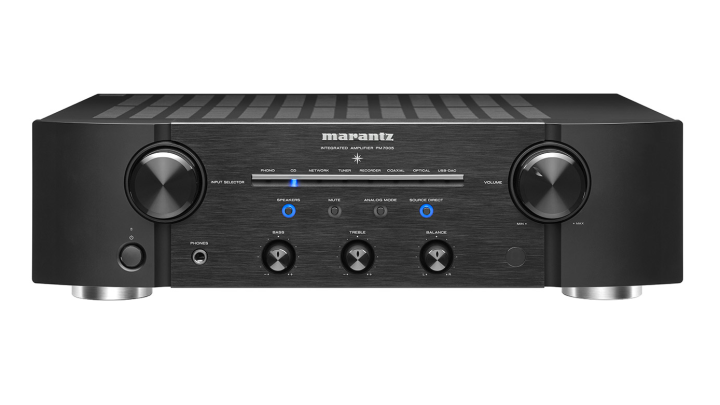
The sleekly-sculpted PM7005 packs premium components inside, including Marantz’s proprietary HDAM SA3 circuitry, a sexy CS4398 DAC from the digital gurus at Cirrus Logic, and a high-speed “instantaneous current” power supply for a blast of juice exactly when you want it. The stereo channels deliver a claimed 80 watts per side at 4 ohms, and speakers connect with gold-plated solid brass terminals for a squeaky-clean connection.
As for sources, the PM7005 mixes a bit of old-school in with the new. Through its USB-B connection, the device will operate as a high quality soundcard for your computer, able to playback hi-res 192kHz/24 bit audio files, as well as DSD files in both 2.8MHz and 5.6MHz. But it also includes a phono connection input paired with Marantz’s Analog Mode, which switches off digital circuitry for a pure sound from all your favorite records.
Additional features for the PM7005 include digital optical and coaxial inputs, a remote control, a signal isolator for DAC Mode, and a current feedback phono equalizer to help insure the purest listening, from 1s and 0s to analog grooves.
Marantz’s new $1,000 PM7005 Integrate Amplifier with USB-DAC is slated for availability from select Marantz dealers beginning in August.
Editors' Recommendations
- Cambridge Audio’s CXA81 Mk II amplifier gets a tune-up and a sweet new DAC
- Marantz unveils high-end amplifier, audio streamer


